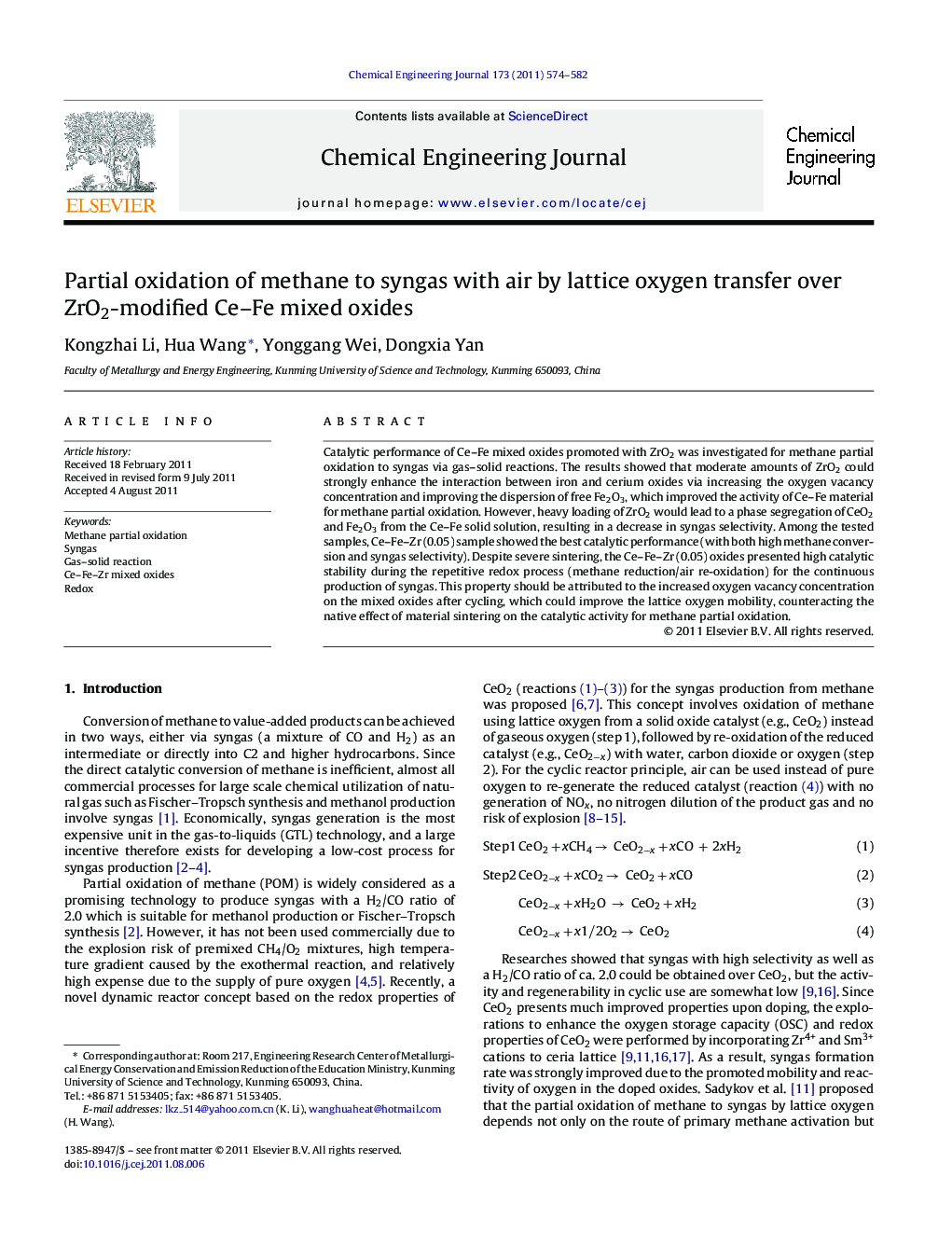| Article ID | Journal | Published Year | Pages | File Type |
|---|---|---|---|---|
| 150743 | Chemical Engineering Journal | 2011 | 9 Pages |
Catalytic performance of Ce–Fe mixed oxides promoted with ZrO2 was investigated for methane partial oxidation to syngas via gas–solid reactions. The results showed that moderate amounts of ZrO2 could strongly enhance the interaction between iron and cerium oxides via increasing the oxygen vacancy concentration and improving the dispersion of free Fe2O3, which improved the activity of Ce–Fe material for methane partial oxidation. However, heavy loading of ZrO2 would lead to a phase segregation of CeO2 and Fe2O3 from the Ce–Fe solid solution, resulting in a decrease in syngas selectivity. Among the tested samples, Ce–Fe–Zr (0.05) sample showed the best catalytic performance (with both high methane conversion and syngas selectivity). Despite severe sintering, the Ce–Fe–Zr (0.05) oxides presented high catalytic stability during the repetitive redox process (methane reduction/air re-oxidation) for the continuous production of syngas. This property should be attributed to the increased oxygen vacancy concentration on the mixed oxides after cycling, which could improve the lattice oxygen mobility, counteracting the native effect of material sintering on the catalytic activity for methane partial oxidation.
► Addition of ZrO2 into Ce–Fe system could enhance the interaction between iron and cerium oxides. ► This interaction creates more oxygen vacancies on the material and improves the dispersion of surface iron species. ► These modifications make the Ce–Fe–Zr catalysts more active for methane partial oxidation. ► Repetitive redox treatment can improve the lattice oxygen mobility of the Ce–Fe–Zr oxides. ► Ce–Fe–Zr material shows high activity and stability in the redox process for successive production of syngas.
